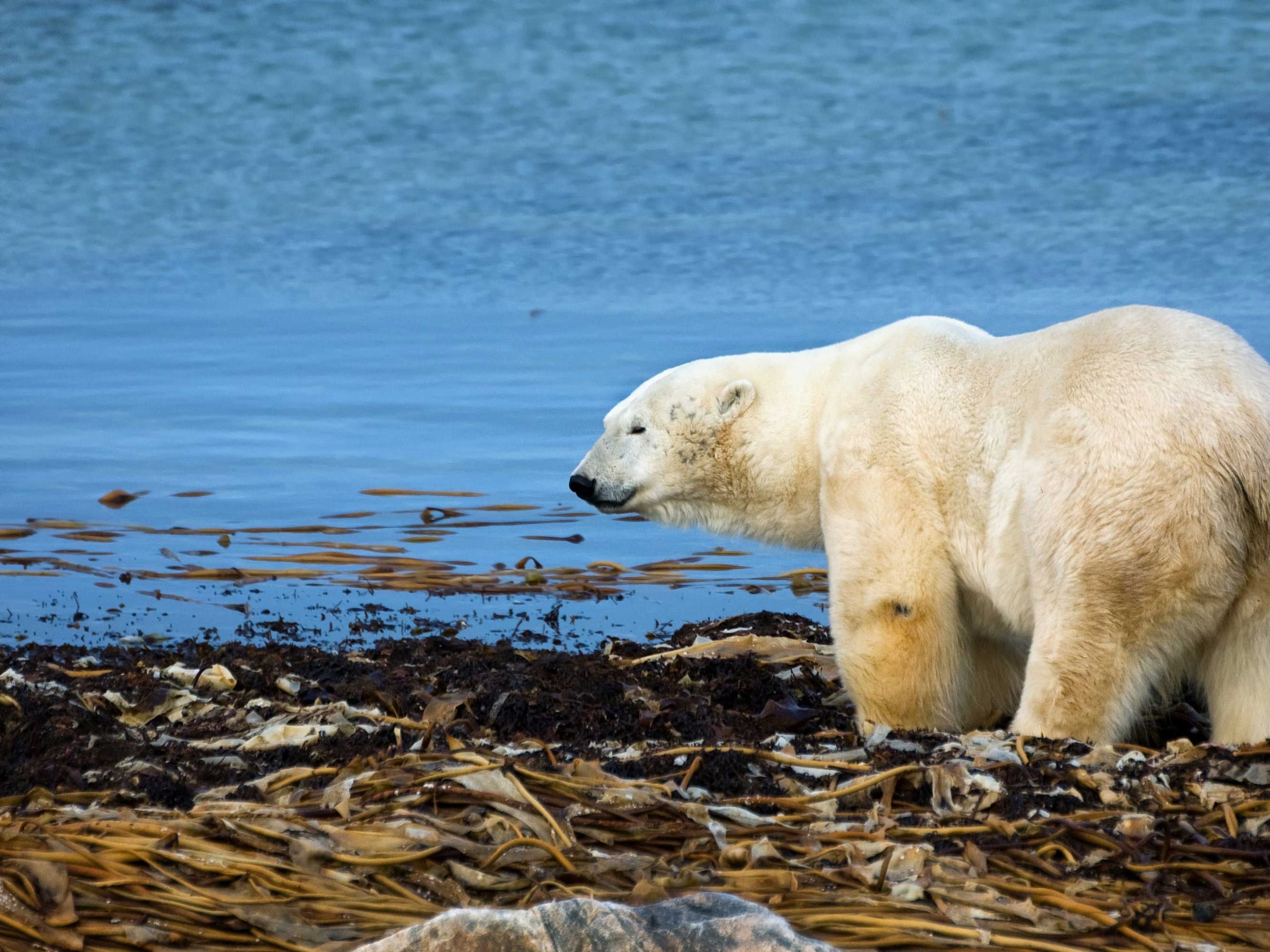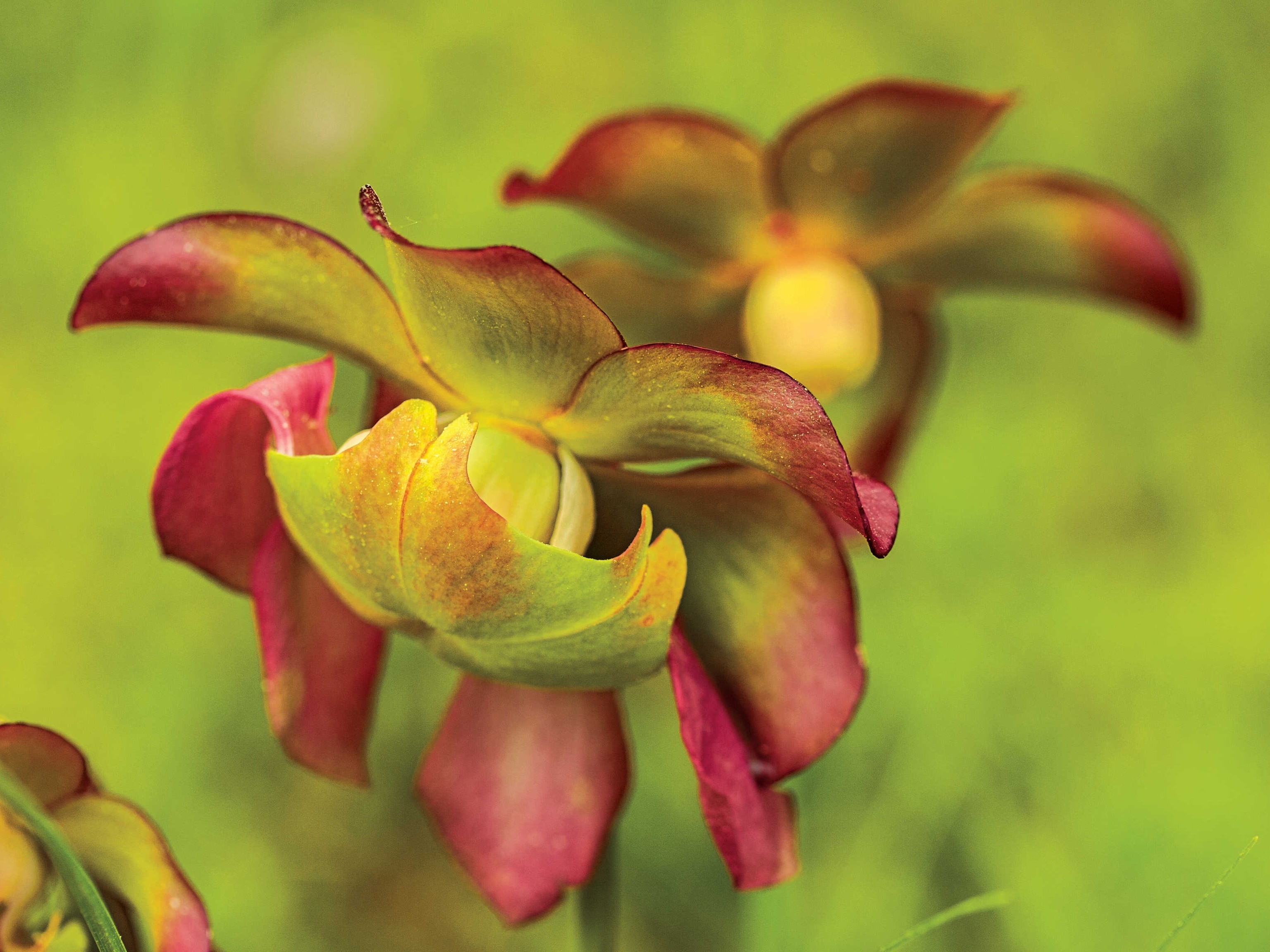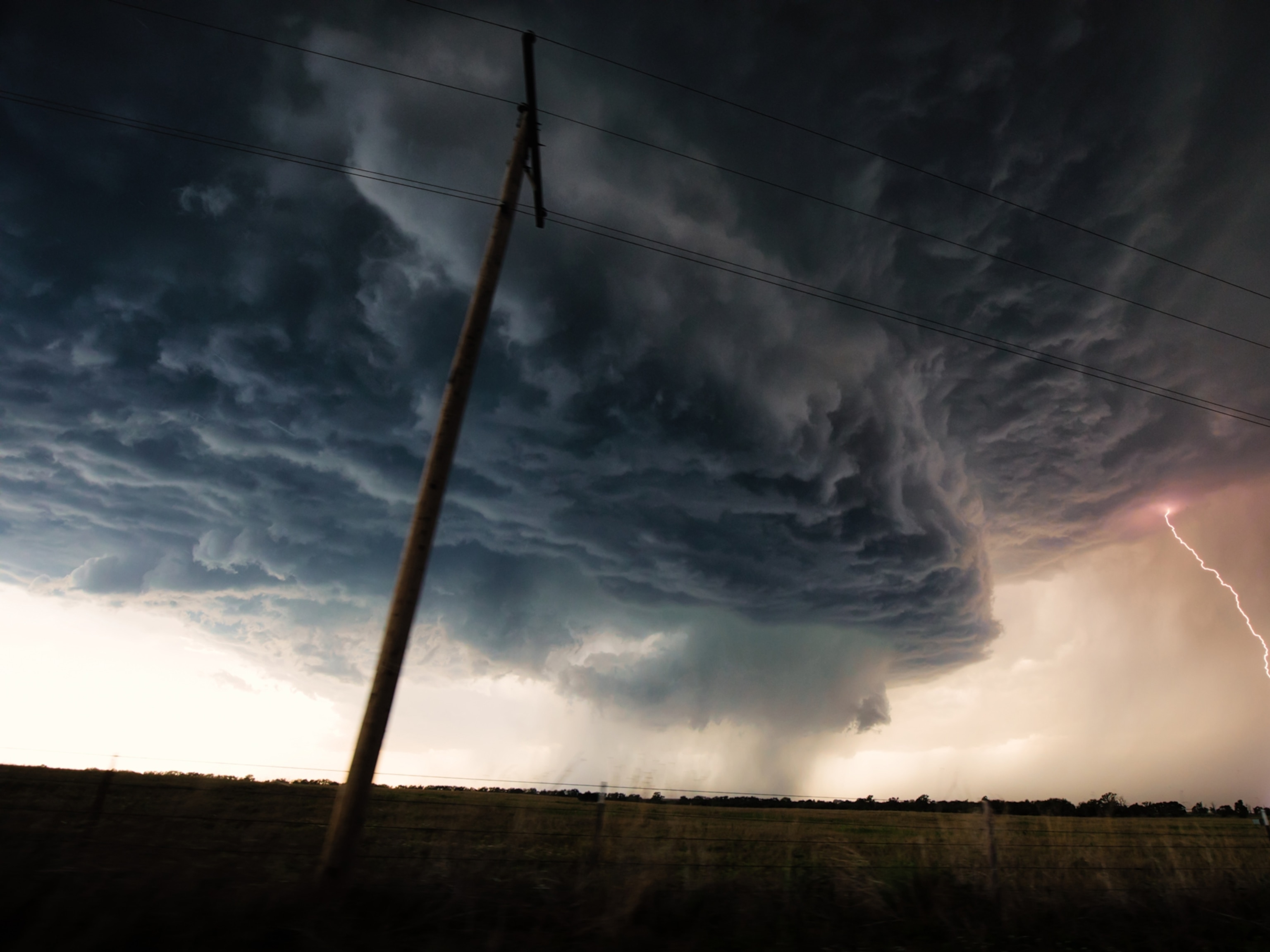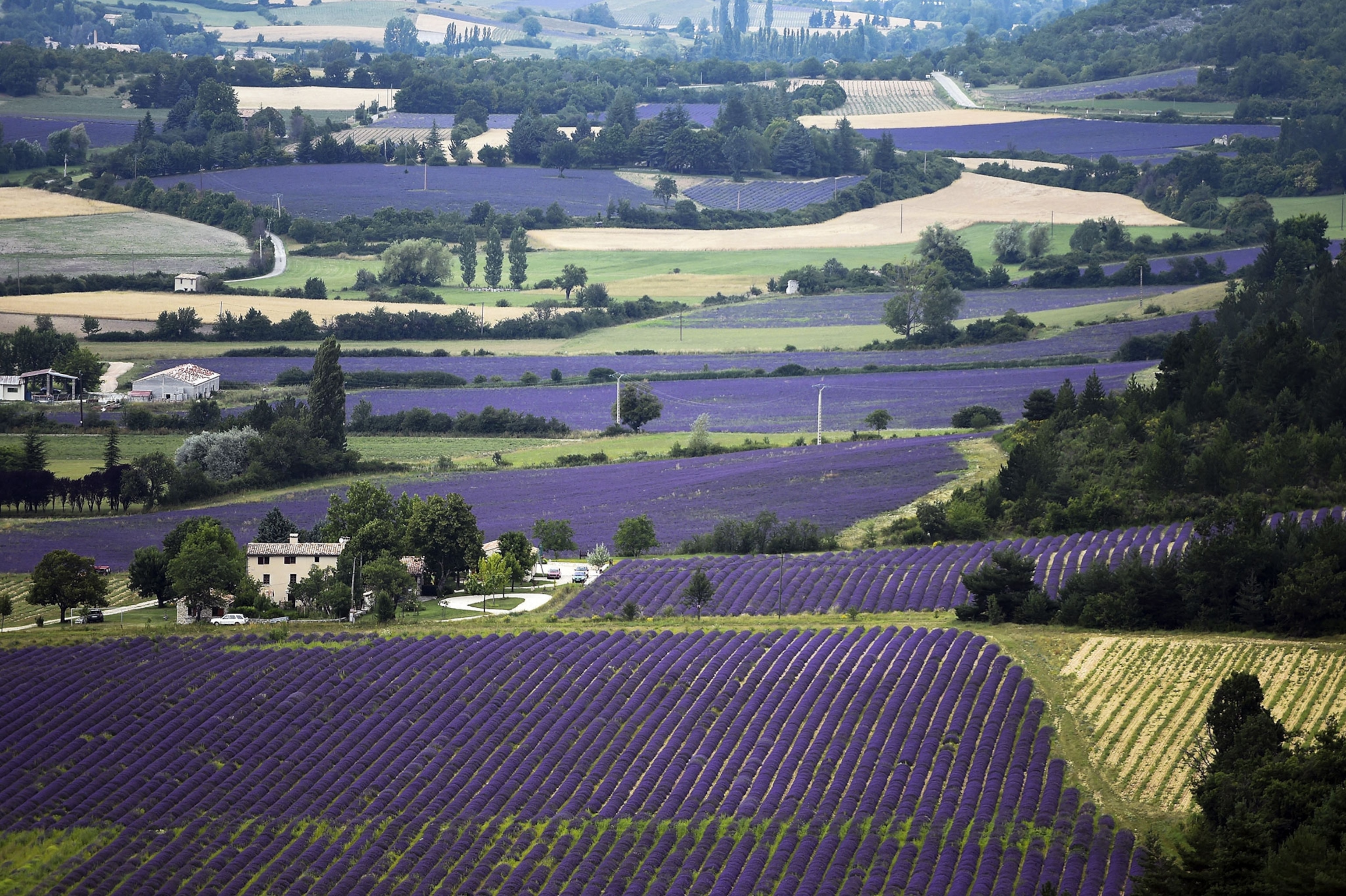
Provence's Legendary Lavender and Olives Threatened by a Changing Climate
To growers, timing is everything, but climate tinkers with nature’s timing. While climate negotiators face off in Paris, dramatic change hits the luxury crops in Provence that give the storied farm region its identity.
AIX EN PROVENCE, France — Down a row of sage-colored trees, workers on footstools with battery-powered rakes shake the last black and green fruits off the branches. Christine Cheylan eyes the progress with a wary smile. She knows that yearly olive harvests in Provence, even after 2,500 seasons, are not gentle.
The owner of Chateau Virant olive farm and winery is happy. But, she also adds, “I’m anxious.” Harvest used to end after Christmas; crews would spend a gloomy, gray month in wool caps and gloves. But it's early December and the harvest is almost over. Cheylan's workers wear light sweaters. In the distance, towering Mont Sainte Victoire, brushed into history by Cezanne, sparkles in the sun. It's 62 degrees Fahrenheit.
As negotiators in Paris try to scratch out the world's first climate-change agreement, it's clear high seas won't drown France, and soaring temperatures won't make the country unlivable. But subtler changes threaten the soul of this country’s most celebrated farm region. A poorly understood element of climate change–shifts in nature's timing called phenology–is altering how these plants interact with their environment, putting all of them at risk.
(The Bitter Truth About Olives)
Olives. Wine grapes. Lavender. In Provence, seasonal changes in temperature, rain, fungi, disease, and pests are harming these specialized luxury crops. Ongoing research suggests even the oak trees needed to produce the region's $600-a-kilogram truffles could be growing slower, perhaps a lot.
Across the Mediterranean region, a spreading bacterial infection, low rain, high temperatures, and a fruit-fly infestation assisted by climate change already drove the olive industry last year to its worst production since the 1950s, when frozen ground wiped out millions of plants. Production fell 17 percent in one year.
"The olive tree is a pretty rugged crop that can withstand long periods of high heat and no rain, but only to a point and with diminishing yields," says Curtis Cord, editor of an independent industry news website, Olive Oil Times.
Scientists increasingly understand the direct impacts of climate change on animals and plants. But there are indirect changes, too: Some wasps build their homes inside acorns–unless warming temperatures cause the acorns to grow early. If flowers bloom weeks too soon, the insects that usually accompany them may not arrive in time. If grasses that hold back dirt on hillsides sprout and die before the rainy season, floods could alter the ecology of the landscape. Such phenological changes can cascade through ecosystems, throwing relationships between plants and animals out of whack.
Every day I see the same things. Every day I still love it.Christine Cheylan, olive grower
Provence growers, particularly of lavender and its hybrid sister, lavandin, are trying everything to fight back: planting newer hybrid crops, adding irrigation, masking their fields with other plants to fool meddlesome cicadas. They're struggling to keep up.
It's not that these crops might entirely disappear. Suitable ground for growing them just keeps moving north. Without significant cuts in greenhouse gas emissions, French scientists say, the climate of Paris by 2100 will likely mirror that of Madrid, 1,200 kilometers south. For a storied region, known for art, landscapes, food, and wine, that's troubling.
"We're Provence," says Thierry Gauquelin, an ecology professor at Aix-Marseille University whose sister happens to run an olive farm. "Without these things, we're not Provence."
“Everybody struggled”
Workers rake the olives from Cheylan's trees, and they fall, like tiny stones, to thin mats, where they are scooped into plastic crates. The fruits will be trucked less than a mile past a 500-year-old wine cellar and into a small processing plant where they will be transformed into Provence olive oil.
Provence stretches from Monaco in the east to the banks of the Rhone River through rolling hills and oak forests and up into the Alps. Its lush farms and ancient wineries inspired Picasso and van Gogh. New brides come from China to walk among its stalks of lavender, some of which later will get sold to luxury cosmetics companies for soap and perfume.
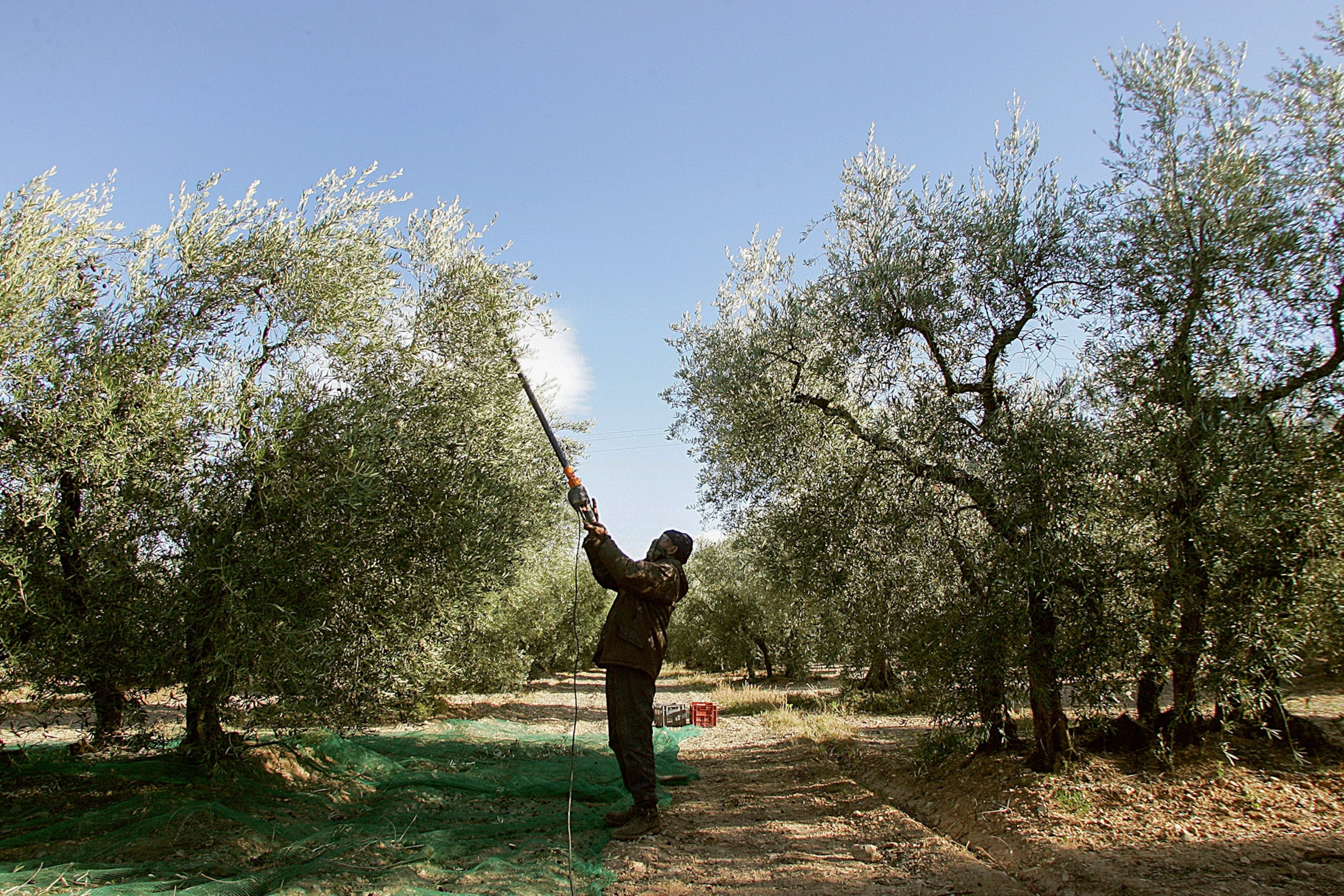
In wine, France is a huge player, but with olives it mostly operates boutique gardens. Northwest of Marseille, tucked below verdant hills dotted with limestone pillars, Chateau Virant boasts 2,000 hectares of wine grapes and another 35 of olives. Cheylan grew up here and studied in Canada, but returned in 1996 for good. "Every day I see the same things," she says. "Every day I still love it."
This year her crop has been very good, but she knows her industry's now more fickle than ever before. She knows the taste of wines from many regions is changing, although she says she hasn't seen that yet in her varieties. But last year a fruit fly, a common threat for growers, devastated much of her olive crop.
Olive production across southern France was so bad that fewer than 300 of her 2,000 suppliers brought fruits to her to process into olive oil. "Everybody struggled," she says.
Scientists say the complex interaction between climate and bugs is something they have not entirely figured out. Cheylan suspects heavy rains last summer played a role. Cord suspects it's rising temperatures.
"Scientists tell us that the warmer winters have resulted in an unprecedented increase in infestations," Cord says. "The warm weather fails to kill them off" so the flies just keep reproducing.
There's no disputing the extent of the damage. During a speech to his members in June, French olive industry president, Olivier Nasles said damage cost the industry $30 million euros in one year. “We have all lost, the olive growers, the mill owners, and the marketing agents,” he said.
Cheylan tries not to worry about what might come next. "I'm just trying to keep up our good production." She agrees with Cord that the earliest threats will likely come in southern regions like Greece and Spain, which also are facing drought. Just last month a new study suggested that olive production in Tunisia, a global leader, could be cut in half by climate change by the 2030s.
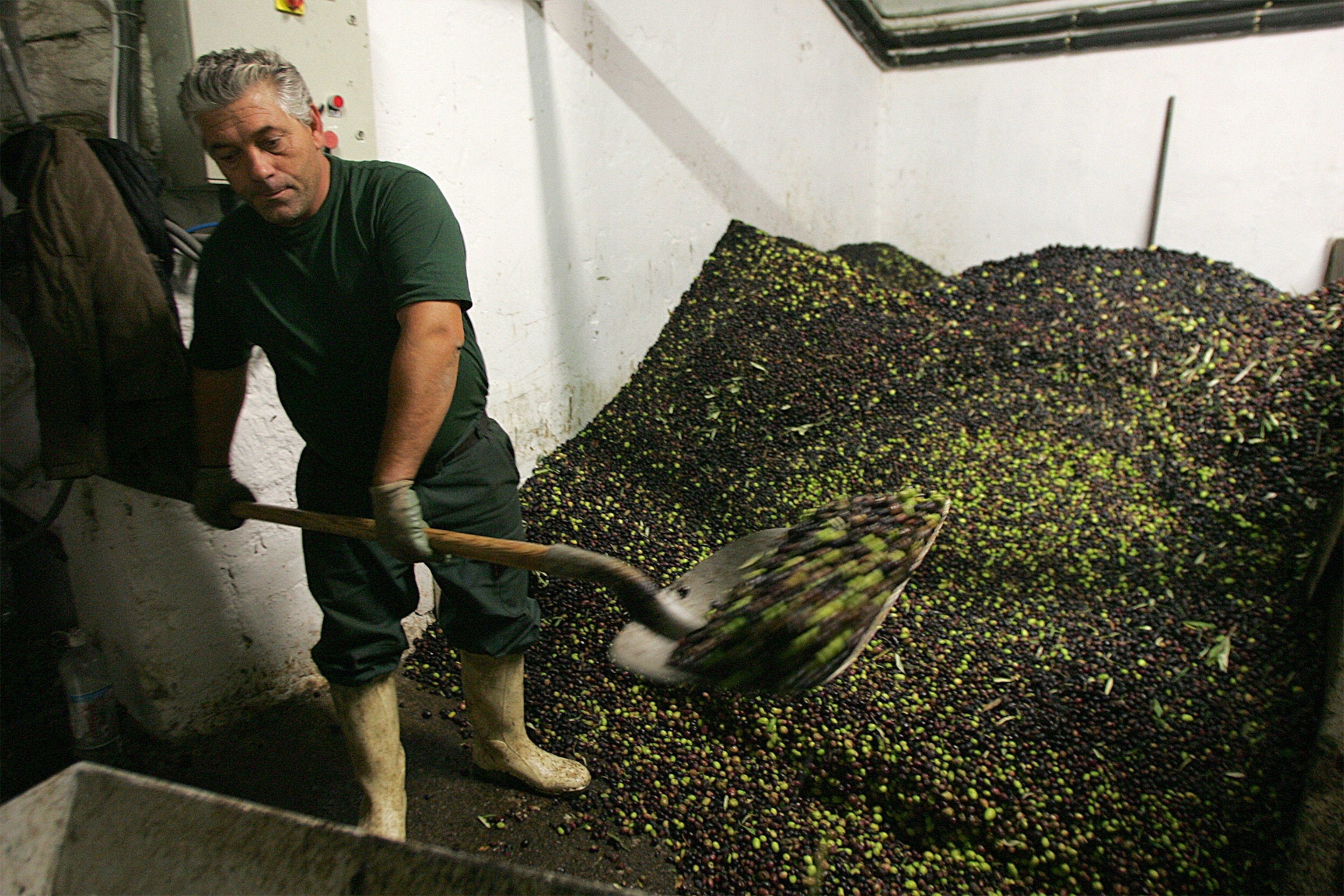
"Studies show that in 30 to 40 years, three-quarters of the wine-producing areas on Earth will no longer be available for wine," Cord says. "And as the grape vine goes, so goes the olive."
Lavender blues
One hundred kilometers north of Chateau Virant, Jean-Baptiste Rivoal, drives past miles and miles of green, shin-high shrubs in red earth. Months from now, he hopes, they will be transformed into flowering purple stalks. These are healthy wintering lavender crops. He pulls over quickly and points out a yellowing version. This bunch will be dead by spring.
Rivoal works for a French lavender industry group, and spends his time trapping cicadas, trying to figure out how to keep them off crops.
As with olives, rising temperatures for a decade have pushed harvests earlier for the region's 1,000 lavender producers. A process that used to start in August, sometimes now begins in late June. And when the plants are cut back each fall in this $50 million-euro business, they need to soak up water from rains that just haven't been coming.
We can get by for the next several years. But five to 10?Eric Chaisse, lavender industry leader
They used to have the occasional bad year. But growth was weak in 2003, 2006, 2007, and 2012, and 2015 was "a catastrophe," Rivoal's boss, Eric Chaisse says. The plants produced a lot of flowers, but suffered a lot and now are highly stressed. "We see a lot of mortality in the fields."
The lack of winter rains, alone, would be bad enough but the warming temperatures also let the cicadas thrive and attack the weakened plants, when they have few defenses. "They won't have enough energy to grow in the spring," Chaisse says glumly.
Growers have planted cereal grains nearby to help hold water in the soil. And Rivoal is trying to breed cicadas that don't attack their crops. But the same scent that makes lavender so potent–in fragrant oils and creams, as air fresheners, and even in medicine–is what attracts the pollinators.
"We can get by for the next several years," Chaisse says. "But five to 10? I just don't know."
Threat to truffle culture?
Chaisse's industry needed years ago the kind of research Thierry Gauquelin and his colleague, Catherine Fernandez, are doing now among the trees.
On a hillside in the village of St. Michel Observatorie, 300-year-old stone buildings sit near one of the world's most powerful telescopes. But these scientists are interested in what surrounds them: groves of trees that make up Provence's signature forests–the same trees that pigs and dogs root in to find truffles.
"This region is really the heart of truffle culture," Fernandez says. As Christmas season approaches, roadside markets spring up, offering up one of Provence's most tantalizing treats.
It's not clear whether oaks or truffles yet have experienced any harm from climate change. But the reduced precipitation that will be more common might. So by covering and uncovering a few hectares of oak forest with a canopy, these researchers are starving a small patch of trees of moisture-giving rain, mimicking drought. In minute detail, they track how these forests change, from the decreasing abundance and biodiversity in the soil to smaller leaf sizes and narrower trunks. After four years it's clear these changes may prove profound, potentially shifting the makeup of the entire woodlands that occupy 500,000 hectares of Provence.
Gauquelin and Fernandez have far more questions than answers. This project is designed to last for years. But they make clear their interest is more than just about truffles. “This is a very ancient forest,” Thierry says. “This is about where we live and who we are.”
Follow Craig Welch on Twitter.




